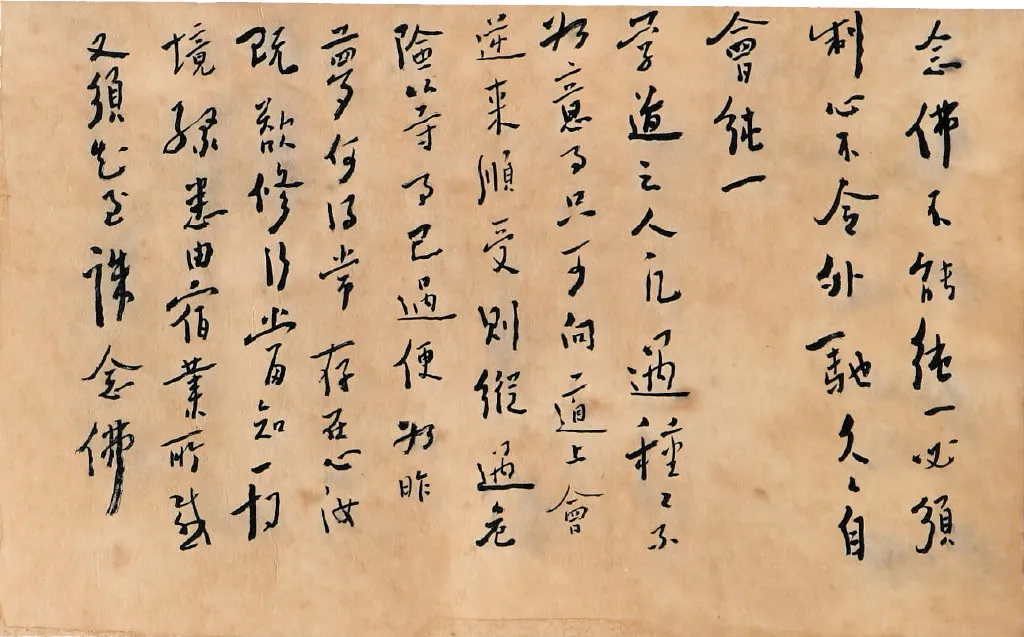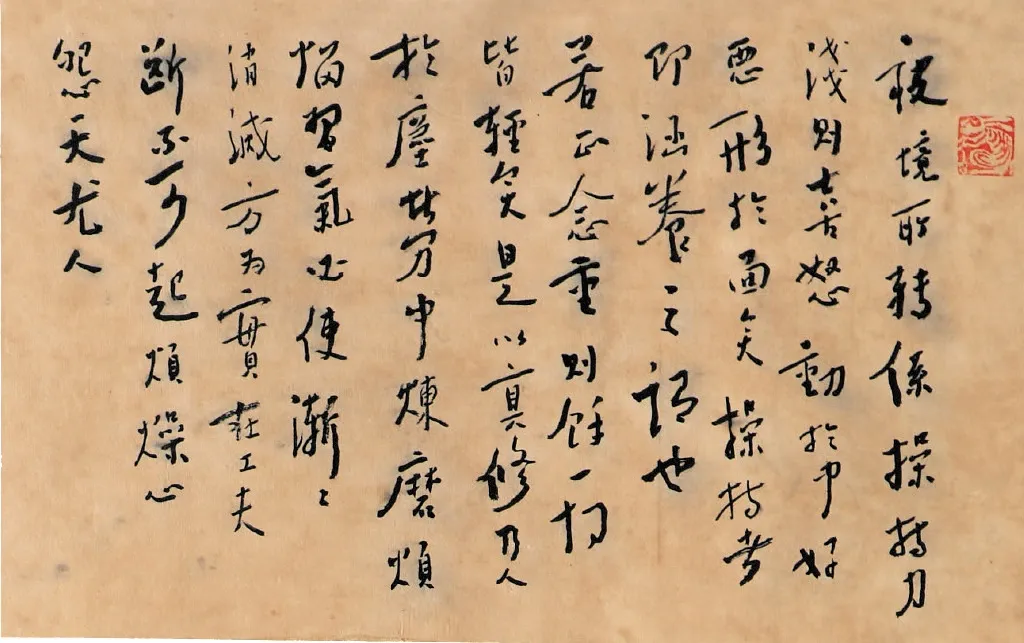卢国俊其人其书
卢国俊
Lu Guojun
主任记者
中国国家画院沈鹏导师书法工作室精英班成员中国书法家协会会员
重庆市文联委员
重庆市书法家协会理事、篆刻委员会副主任重庆市永川区书法家协会主席《永和今韵》书法杂志主编

01 卢国俊书唐庚对联

不必低头求同群You Don’t Have to Blend in If You Were Born to Stand Out
卢国俊深入传统,尤其对篆、隶书和楷、行书下过很大功夫。篆、隶、楷他喜欢高古奇肆一路,篆书如《散氏盘》《石鼓文》《虢季子白盘》等,隶书如《石门颂》《开通褒斜道刻石》等,魏碑如《石门铭》《广武将军碑》《古塔铭》等。他能够从这些金石碑刻当中捕捉到那些远古的审美情趣,化为自己的个性化语言,为己所用。其行书受何绍基、沈曾植、弘一法师、八大山人以及谢无量等人之影响,且根据自身之喜好,适当有所取舍。因此,在他的作品当中弥漫着一种高古典雅、自然质朴之气息。他好古而不泥古,善变而不臆造,注重古典精神与现代意识互相结合来对自己的审美追求进行尽可能完美的表达。
卢国俊书法时常不计工拙,从他的诸多作品来看,他很少沾染时下展览流行的那种涉奇猎怪、扭捏作态、七拼八凑、随波逐流的不良风气,而是始终如一地保持着一种传统文士的高贵品质,追求人格精神和审美思想的自由和独立。

02 卢国俊书印光法师嘉言
卢国俊在书法上所要竭力追求的就是我们这个特殊时代的人文精神,因此,他没有把书法仅仅作为一种技能,而是作为一种人格修养来对待。在他的书法作品里面,有对古人山林生活的向往,也有对时人玩弄技巧的反正。体现的是一种轻松、恬淡、优雅、闲适、清静、自然的审美情趣,不去有意追逐世俗之所好。
任何艺术形式,如果上升不到“道”的层面,那它就是低级的,是形而下的。卢国俊正是有了这样的认识,因此他数十年来一直在探索一条属于自己的“由技进道”的书法篆刻之路。艺无止境,他面对当代书坛印界所存在的诸多问题,也一直处在思考之中。他这种思考,除了有对自身的如何调整和超越之外,也有对书坛乱象的种种忧虑。
——傅德锋(书法家、艺术评论家,多家书画报刊专栏作家。别号山石道人、海岳道人、醉墨先生、大漠居士,原文有删节。)
Lu Guojun who deeply respects Chinese traditions has made tremendous effort in the seal script, official script, regular script and cursive handwriting. He prefers ancient and grotesque seal script, official script and regular script, including official script such as San Family Plate, Burring of the Pre-Qin Period and Ji Zibai Plate of the Guo State; official script such as Stone Gate Praise and Da Kai Tong; tablet of Wei Dynasty such as Stone Gate Cliff Inscriptions, Chan Tablet of the Pre-Qin Period and Ancient Temple Tablet. He can capture ancient aesthetic tastes from these inscriptions and turn them into his own personalized language for his own use. For his cursive handwriting, though influenced by masters like He Shaoji, Shen Zengzhi, Master Hongyi, Zhu Da and Xie Wuliang, Lu Guojun is very selective in absorbing their handwriting styles. Therefore, he is able to present classic, elegant, simple and vintage-style cursive handwriting. He likes the past but does not hold onto it. He fantasizes about art but does not fabricates it. By virtue of classical spirit and modernity, he aims to express his aesthetic pursuit in a perfect approach.
Lu Guojun has never got tired of laborious work in honing his skills. He has stayed away from the unfavorable trend of novelty hunting, mannered and copying method or going with the flow, which is popular in current exhibitions. Rather, he maintains the noble quality of a traditional scholar who pursues the freedom and independent personality and distinctive aesthetic appreciation.
What Lu Guojun endeavors to pursue in calligraphy is the humanistic spirit of our special times. Instead of treating calligraphy simply as a skill, he regards it as a kind of personality cultivation. In his calligraphy works, there is a yearning for the life of the ancients in the mountains and forests, and also an opposition against the people of our times who play tricks in calligraphy. He presents his relaxed, tranquil, elegant, leisure, quiet and natural aesthetic taste in lieu of a deliberate chase after the secular good.

03 卢国俊篆刻佛像印

04 卢国俊篆刻“其有众生”


Any form of art that fails to touch the essence of life is inferior and superficial. With such a mindset, for a decade, Luo Guojun has stayed committed to identifying a way which enables him to reach a stage of perfection in calligraphy and seal carving. However, art is endless. Faced with a plethora of problems in the contemporary calligraphy circle, he never stops trying to find remedies. He thinks about how to adjust and transcend himself, and also how to regulate the troubled calligraphy circle.
—— Fu Defeng(calligrapher, art critic, columnist of many calligraphy and painting newspapers and periodicals) (Also known as Shanshi Daoren, Haiyue Daoren, Mr. Zui Mo and Damo Jushi. The original text is abridged.)
卢国俊书法小说Lu Guojun’s Calligraphy Novels
2013 年5 月,我进入中国国家画院沈鹏工作室学习,在这里,我第一次见到卢国俊兄。同学两年,对国俊兄的了解也多了起来。其实知道卢国俊这个名字,算来已经是上个世纪的事了。当时很有影响的全国第三届楹联书法大展上,国俊兄的一副对联获奖,这是我对他和他的作品的最初印象。
之所以能有所留意,是因为他的作品在当时颇有些另类,直接往某家某帖上套是很难的,这起码可以看出国俊兄于书法学习是很有心得的,不囿于寻常所见,而能别具慧眼,另辟蹊径,从而与很多学习者拉开距离,单是这一点,已经不能不让人对他的作品刮目相看了。之后的十几年间,在各种媒体展览上陆续见到他的作品,感觉大致还是最初所见的印象,尽管各有精彩之处,但是从审美趣味上看,无疑是一如既往的。
通过各种资料,我对国俊兄书法的印象由当初的不无浮泛而渐渐具体鲜活起来。此前,我更多见到他的行草书一类,少字数的如对联等,用笔结字在率意质朴中透出天真稚拙甚至顽皮,字数较多的小行草,更多自然书写的洒脱自在。这些固然是国俊兄书法中具有代表性的一路,也是很多人对他的书法的印象。
如果关注一下他这些手段之外,会更多更深地了解卢国俊书法。他的篆书隶书,与他的行草一脉相承,在范本选择上更多借鉴野逸一路,而整饬近乎工艺的小篆、强调波磔的所谓庙堂气的隶书则有所不为了。
国俊兄是个具有良好艺术感觉的艺术家,也是个不肯随波逐流而坚定地一意孤行的艺术家,尽管我一直认为艺术家本该如此,但如今真的是很难得了。
——魏春雷(《艺术品》杂志专栏撰稿人,当代书法论坛“魏春雷评书”专栏主持人。原文有删节。)

05 临“八大山人临河集序”
In May 2013, I came to study at Shen Peng Studio of the National Academy of Painting of China, where I met Brother Lu Guojun for the first time. As fellow apprentices for two years, I gradually know more about Brother Guojun. Actually I heard about Lu Guojun as early as in last century. At the influential Third Chinese Couplet Calligraphy Exhibition, a couplet of Brother Guojun won the prize, and it was my first impression of him and his works.
His works caught my special attention because they were rather unusual at the time. His style is distinctive from any existing calligraphy master or school. Obviously, Brother Guojun is very knowledgeable in calligraphy learning. He does not rigidly adhere to a certain type, but opens up his own path with a unique insight. Thus, he outrun most other learners and left a deep impression on me. In the next couple of years, I have been following up his works on the media or exhibitions. My first impress has barely changed. Though the contents are different, the aesthetic taste within always stay the same.
Through research and study, my impression of Brother Guojun's calligraphy is no longer abstract, and has gradually come to life into a concrete form. Prior to this, I saw more of his cursive lines, such as couplets with fewer words of simple, naive, clumsy and even naughty handwriting. His cursive handwriting with more words is more natural and free style. These are, of course, the most representative features of Brother Guojun's calligraphy and also many people's first impression of his calligraphy.
However, if you look beyond his methods, you will know more about Lu Guojun's calligraphy. His seal script and official script are similar to his cursive handwriting. In the choice of model text, he does not stick to any particular style, which is quite innovative because seal script emphasizes neat and order and official seal adopted by the imperial court also demands regular strokes.
Brother Guojun is an artist with sharp consciousness in art. He never goes with the flow and is always determined to go his own way. Although I always think that artists should be like this, it is really rare now.
—— Wei Chunlei(a columnist for Artwork magazine and moderator of "Wei Chunlei's Comments on Calligraphy" at the Forum on Contemporary Calligraphy. The original text is abridged.)

